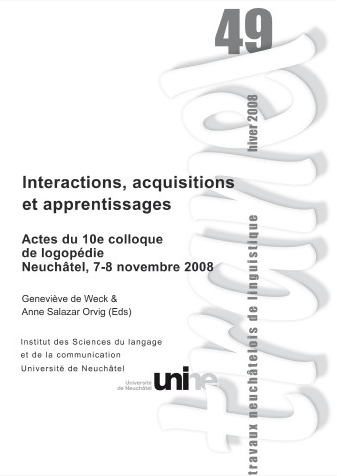Intonation, contexte et interaction. Sur quels indices les enfants comprennent-ils l'intention du locuteur ?
DOI :
https://doi.org/10.26034/tranel.2008.2763Résumé
This study investigates the contribution of intonation and context in the understanding of utterances presented in a situational context. In order to find out whether intonation is the sole cue, we separated the intonation from the content of utterances (meaningless syllables).
Five- to nine-year old children and a group of adults performed a computerized story-completion task, using multimedia, combining sound and image. This task required them to determine the speaker's intention. In Experiment 1, the stories vary according to intonation (positive vs negative) and context (positive vs negative), generated two types of situations: congruent situations in which the context and the intonation pointed to the same interpretation of the utterance, and incongruent situations in which the context and the intonation pointed to two contradictory interpretations of the utterance. In Experiment 2, cues (intonation and context) are not in competition anymore.
Results show that in incongruent situations, the five- and seven-year-olds did not base their interpretation of the utterances on intonation; the opposite was found for the adult group. The nine-year-old started to take intonation into account. However, when the prosodic cue is the sole source of information (Experiment 2), the seven-year-olds are able to take intonation into account.


